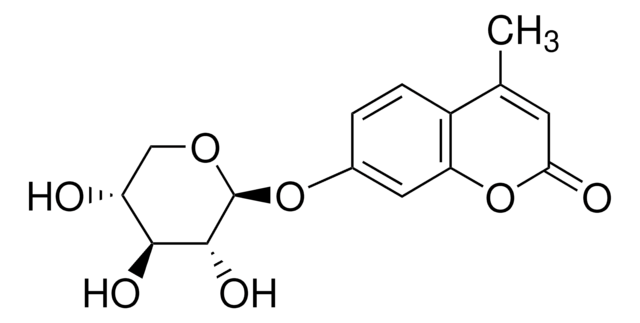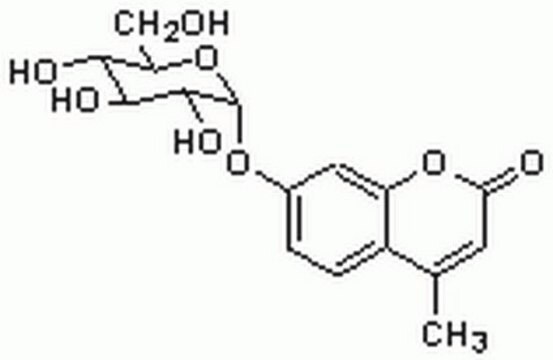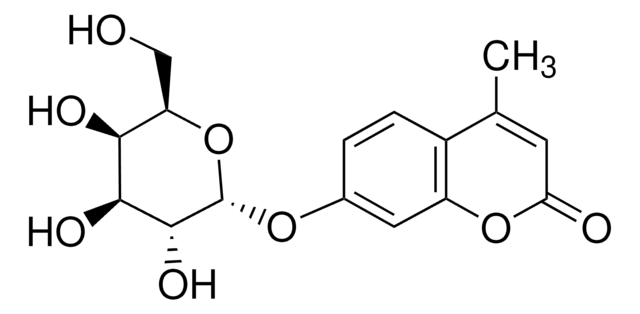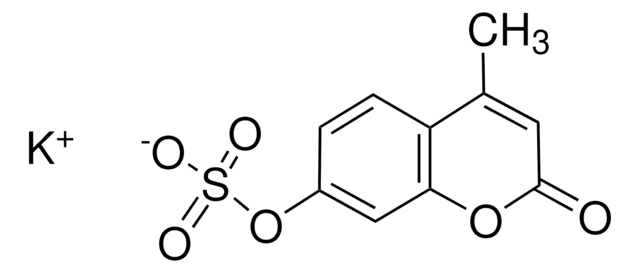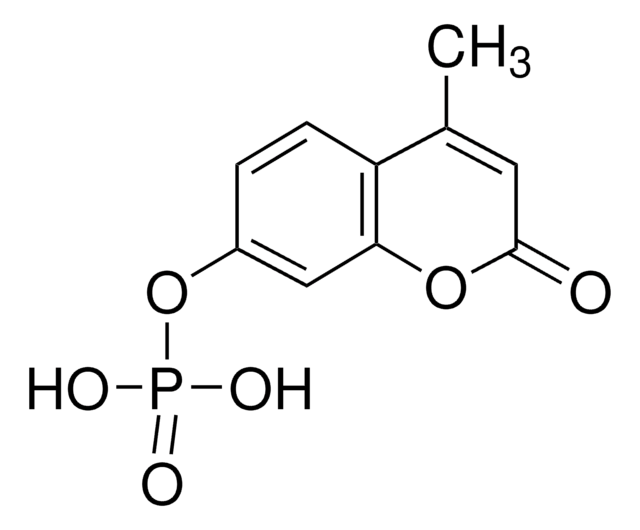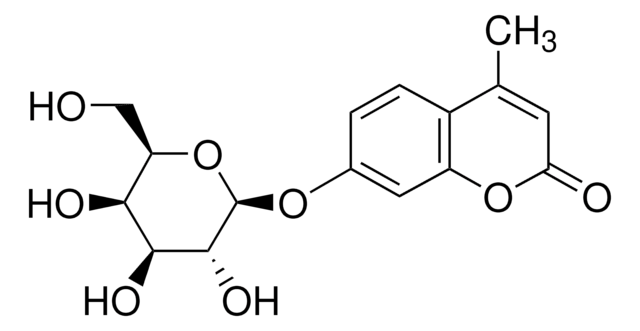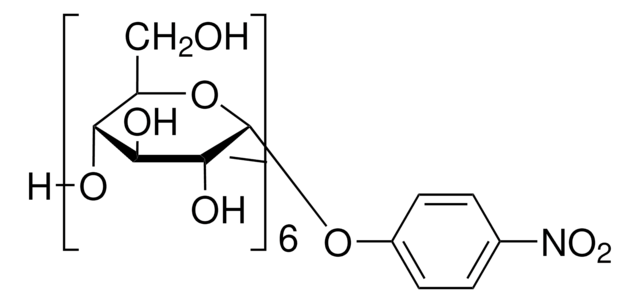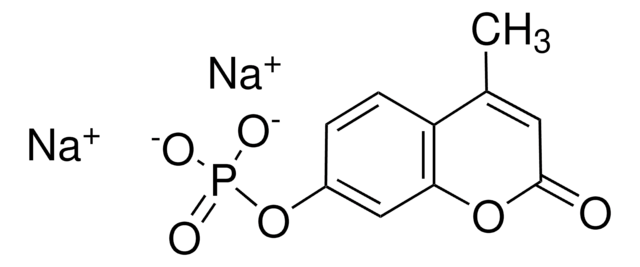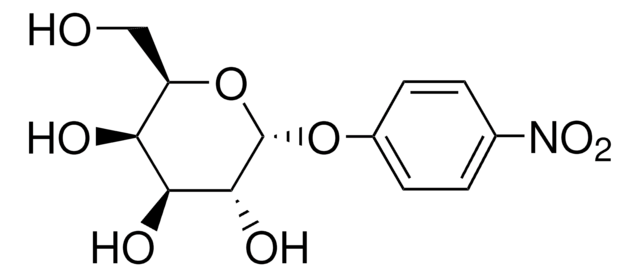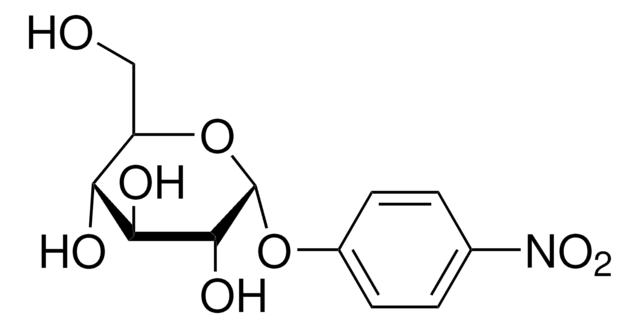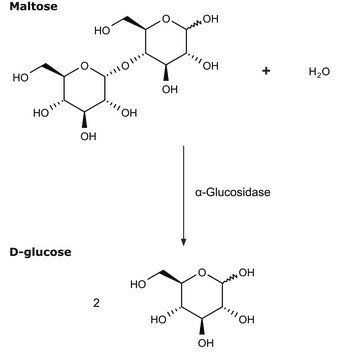69591
4-Methylumbelliferyl α-D-glucopyranoside
≥98% (TLC)
Synonyme(s) :
4-Methylumbelliferyl α-D-glucoside
About This Item
Produits recommandés
Description
α-glucosidase substrate
Niveau de qualité
Essai
≥98% (TLC)
Forme
powder
Solubilité
DMSO: 50 mg/mL, clear, colorless to faintly yellow
Fluorescence
λex 316 nm; λem 375 nm (Reaction product)
λex 317 nm; λem 374 nm (pH9.0)
λex 360 nm; λem 449 nm
λex 365 nm; λem 445 nm in 0.1 M Tris pH 8.0 (α-glucosidase)
Température de stockage
−20°C
Chaîne SMILES
CC1=CC(=O)Oc2cc(O[C@H]3O[C@H](CO)[C@@H](O)[C@H](O)[C@H]3O)ccc12
InChI
1S/C16H18O8/c1-7-4-12(18)23-10-5-8(2-3-9(7)10)22-16-15(21)14(20)13(19)11(6-17)24-16/h2-5,11,13-17,19-21H,6H2,1H3/t11-,13-,14+,15-,16+/m1/s1
Clé InChI
YUDPTGPSBJVHCN-JZYAIQKZSA-N
Vous recherchez des produits similaires ? Visite Guide de comparaison des produits
Catégories apparentées
Description générale
Application
Conditionnement
Code de la classe de stockage
11 - Combustible Solids
Classe de danger pour l'eau (WGK)
WGK 3
Point d'éclair (°F)
Not applicable
Point d'éclair (°C)
Not applicable
Équipement de protection individuelle
Eyeshields, Gloves, type N95 (US)
Faites votre choix parmi les versions les plus récentes :
Déjà en possession de ce produit ?
Retrouvez la documentation relative aux produits que vous avez récemment achetés dans la Bibliothèque de documents.
Les clients ont également consulté
Notre équipe de scientifiques dispose d'une expérience dans tous les secteurs de la recherche, notamment en sciences de la vie, science des matériaux, synthèse chimique, chromatographie, analyse et dans de nombreux autres domaines..
Contacter notre Service technique


